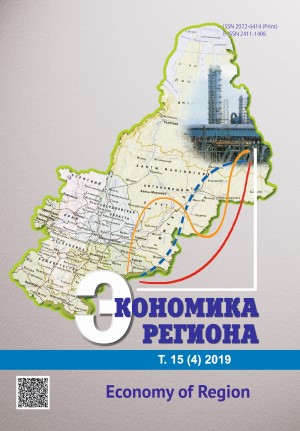СИСТЕМА ОЦЕНКИ ЭФФЕКТИВНОСТИ И МОНИТОРИНГА РЕЗУЛЬТАТОВ ПОЛИТИКИ ИМПОРТОЗАМЕЩЕНИЯ
System for Assessing the Efficiency and Monitoring the Results of Import Substitution Policy
Author(s): Boris Aronovich Kheyfets, Veronika Yurievna ChernovaSubject(s): Economy
Published by: Институт экономики Уральского отделения Российской академии наук
Keywords: import substitution; structural technological modernisation; agriculture; food security; economic security; autarchy; restrictions and sanctions; trade liberalization; industrial policy
Summary/Abstract: Import substitution is a top priority of Russia’s economic policy in recent years. Complex geopolitical conditions, Western sanctions and consequent Russian countermeasures necessitated urgent compensation for the reduced volume of imported goods through increasing domestic production. Despite a significant rise in the number of publications on the problems of import substitution policy, the issues of assessing the efficiency of the ongoing policy are yet to be studied. The analysis of the existing methods for quantitative assessment of import substitution revealed their focus on assessing the potential or expediency of substituting imported products with domestically produced goods. Further, such analysis showed poor applicability of these methods when monitoring the results of the current policy. Thus, we developed a system for assessing the efficiency and monitoring the results of import substitution policy as a component of structural policy aimed at the modernisation of the Russian industries and manufacture of competitive products. The obtained results have demonstrated that, during the study period, the potential of the Russian agriculture was increasing due to a reduced import and accelerated growth of investments in fixed capital, in reconstruction and modernization. The detected rise in innovation potential of agriculture is largely attributable to low base effect. At the same time, the efficiency of using the potential of structural and technological modernisation in agriculture demonstrates a clear trend. However, intensive growth in the potential of import substitution modernisation in agriculture in subsequent periods may provide higher growth rates of modernisation targets. The proposed approach allows identifying the cause and effect relationship between ongoing processes and forecasting the dynamics of the industry development. The obtained method can be used to substantiate decisions related to the development of import substitution projects.
Journal: Экономика региона
- Issue Year: 15/2019
- Issue No: 4
- Page Range: 1266-1278
- Page Count: 12
- Language: Russian

